Soda Can Crusher
You could use your foot, your hands, or even your head (not advised) to crush a soda can. But nothing compares to the fun you’ll […]
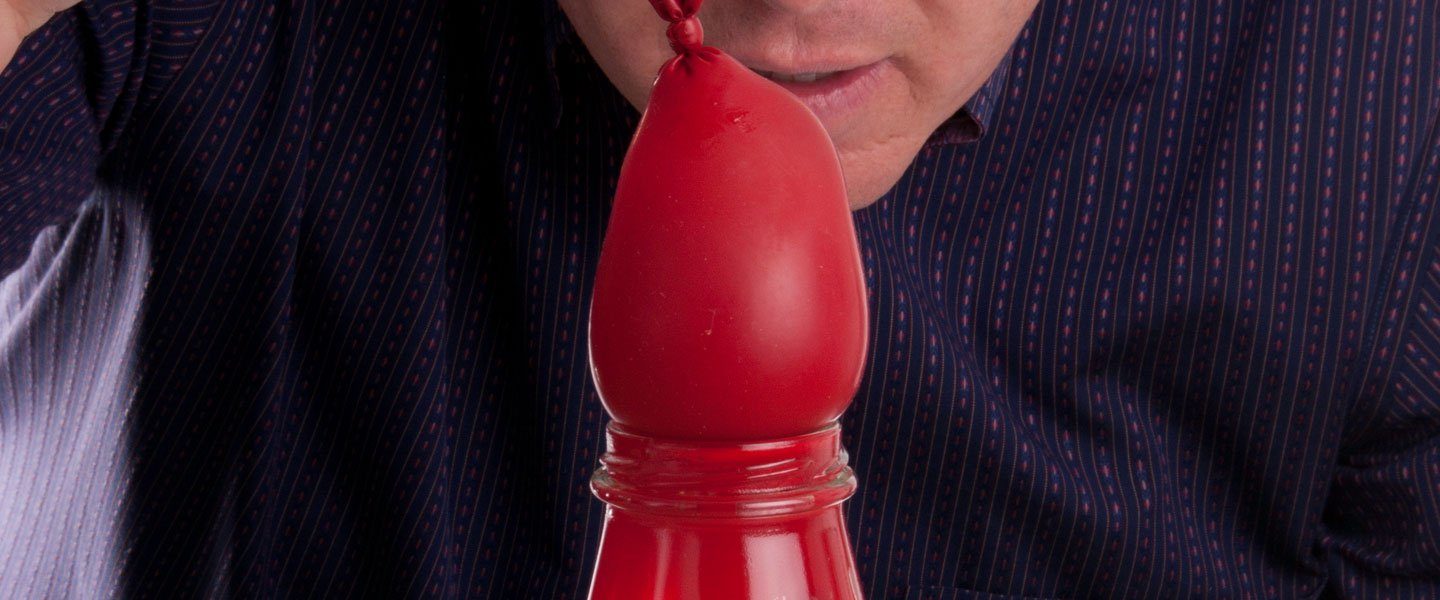
The Egg in the Bottle trick is a science classic, dating back at least a hundred years. Here’s a variation that uses a water balloon instead of an egg. Be sure to look at the Take It Further ideas for a cool “upside down” twist.
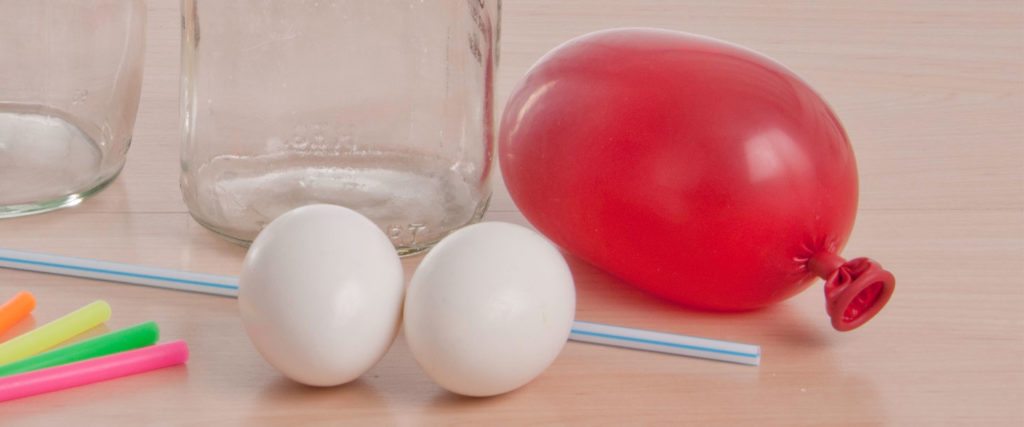
Carefully fill the balloon with water so the balloon is slightly larger than the mouth of the bottle. Tie it off. Make several water balloons just in case the first one breaks.
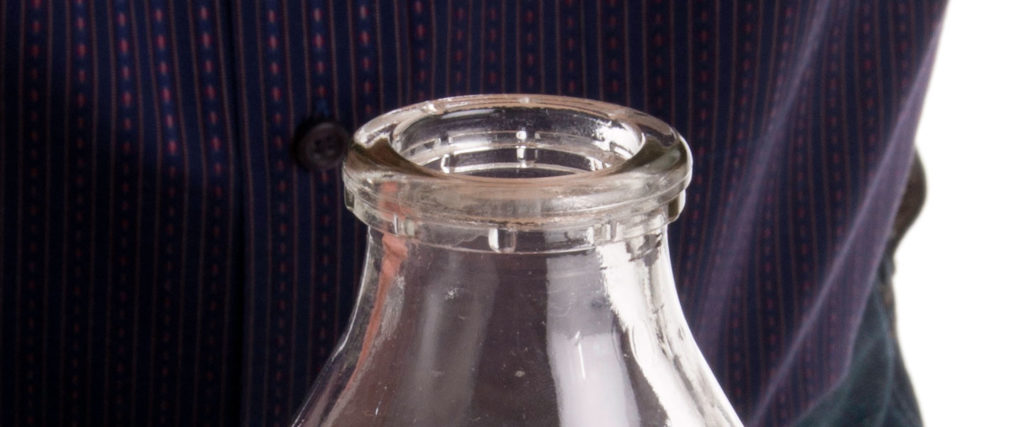
The glass juice bottle should have a wide mouth between 11/2 and 2 inches in diameter. If you can find an old-fashioned glass milk bottle, use it! Rinse out the bottle to remove any leftover, sticky, slimy stuff that might be at the bottom.
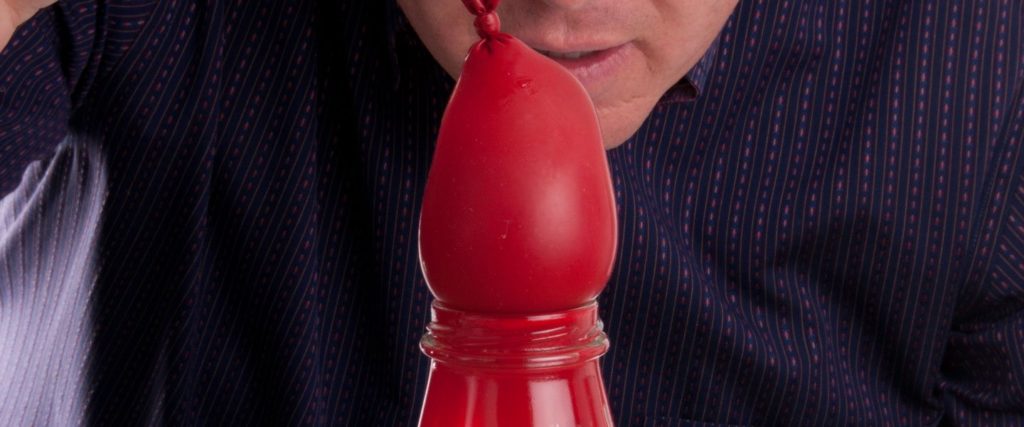
Here’s the challenge . . . Your job is to find a way to get the balloon into the bottle without breaking it. How are you going to do it? It’s important that you take a minute to test out some of your ideas before jumping ahead to read our solution. Keep trying! Once you’ve come up with your hypothesis, read on to find out our answer.
Start by smearing some water around the mouth of the bottle. The water acts as a lubricant.
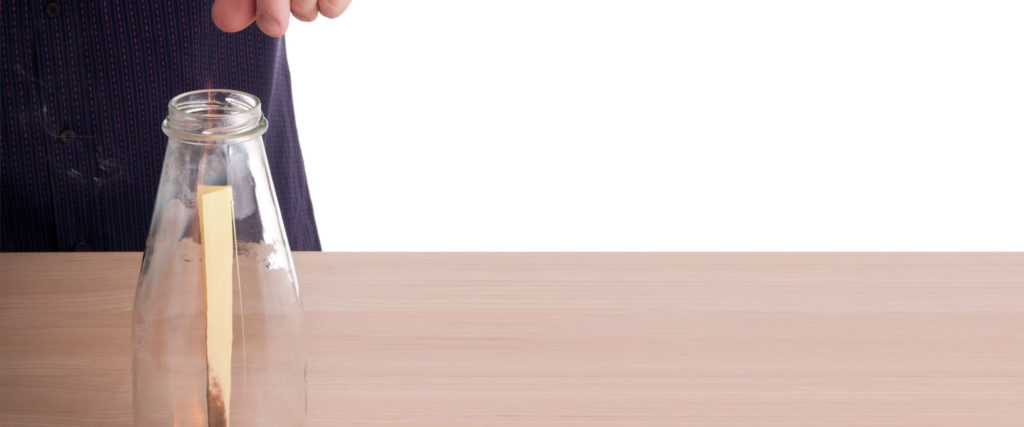
The next few actions require some good teamwork. Set the glass bottle in front of you on a table. Make sure the water balloon and strip of paper are close by. The adult member of the team is responsible for lighting the strip of paper on fire and quickly pushing it into the bottle. As soon as the burning paper goes into the bottle, the second team member covers the mouth of the bottle with the water balloon.

The balloon will immediately start to wiggle around on the top of the bottle, the fire in the bottle will go out, and some invisible force will literally “push” the balloon into the bottle. Amazing!
Now it’s on to the next challenge. Can you get the balloon back out of the bottle? Use what you’ve learned about air and air pressure to come up with a way to get the balloon back out. Here’s a hint—try sneaking a straw alongside the balloon when you pull it out. If the outside air can get inside the bottle, the water balloon will come out.
The burning piece of paper or birthday candles heat the molecules of air in the bottle and cause the molecules to move far away from each other. Some of the heated molecules actually escape out past the egg that is resting on the mouth of the bottle (that’s why the egg or water balloon wiggles on top of the bottle). When the flame goes out, the molecules of air in the bottle cool down and move closer together, making room for new air molecules. This is what scientists refer to as a partial vacuum. Normally, the air outside the bottle would come rushing in to fill the bottle. However, that darn egg is in the way! The pressure of the air molecules outside the bottle is so great that it literally “pushes” the egg into the bottle.
Classic Egg in the Bottle
Now that you’ve mastered the technique, substituting a hard-boiled egg for the water balloon. The trick here is to find an egg that is just slightly bigger than the mouth of the bottle. The other little secret is to grease the mouth of the bottle with vegetable oil so that the egg slides right in. If you’re using the same bottle, make sure you rinse it out with water. This step cleans out the old burnt paper and helps circulate more oxygen into the bottle so the paper will burn. Have an adult light the strip of paper on fire. Carefully push the burning strip of paper into the bottle, quickly cover the mouth of the bottle with the egg, and watch what happens next.
Want to get the egg back out so you can do it again? Try this, if you dare . . . put your mouth over the mouth of the bottle and forcefully blow air into the bottle. The egg should pop back out of the bottle right into your mouth! Can it get any cooler than that?
Egg in the Bottle–Upside Down Twist
All you need for this variation is a hard-boiled egg, a glass bottle, several birthday candles, and a match. Carefully hold the wider end of the egg in one hand and slowly push two birthday candles into the narrow end of the egg. Light the candles, turn the bottle upside down, and slowly move it into position an inch above the flaming candles. Allow the flames to heat up the air inside the bottle for just a few seconds and then place the bottle down over the candles. The candles will go out and with a “Pop!” the egg will squeeze up into the bottle!
This activity requires the use of matches and fire. Adult supervision is required.
When you fly in an airplane or drive high up into the mountains, you’ve prob- ably noticed that your ears sometimes need to “pop.” This “popping” is caused by the same change in air pressure that “pops” the egg into and out of the bottle. Air pressure decreases as altitude increases, so as you go higher, the air pressure decreases, causing the air trapped in your inner ear to push your eardrums outward. Your body tries to regain equilibrium or balance by allowing some of the air in your inner ear to escape through the Eustachian tubes. When the tubes open, the pressure releases and you feel the “pop.”
On the way back down to a lower altitude the air pressure increases. The extra pressure from the outside of the ear pushes the eardrums inward. Air moves in through the Eustachian tubes, the ears “pop,” and balance is restored. Many people don’t wait for this to happen on its own because the pressure imbalance can be uncomfortable. Instead, they just plug their noses, close their mouths, and pretend like they’re blowing their noses. Because the air from their lungs has nowhere to go, it is forced into the inner ear through the Eustachian tubes, causing their ears to “pop.”